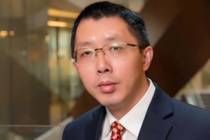应电子与信息工程学院任品毅教授邀请,澳大利亚University of Technology Sydney的Guoqiang Mao教授来我校进行学术交流并做学术报告。
报告时间:2016年11月3日(星期四)下午2:30 ~ 5:30
报告地点:西一楼电信学院第一会议室
报告题目:Ultra-dense Small Cell Networks: Theory and Deployment
报告人简介:
 Guoqiang Mao (S'98-M'02-SM'08) received PhD in telecommunications engineering in 2002 from Edith Cowan University. He was with the School of Electrical and Information Engineering, the University of Sydney between 2002 and 2014. He joined the University of Technology Sydney in February 2014 as Professor of Wireless Networking and Director of Center for Real-time Information Networks. He has published 200 papers in international conferences and journals, which have been cited more than 4000 times. He is an editor of the IEEE Transactions on Wireless Communications (since 2014), IEEE Transactions on Vehicular Technology (since 2010) and received “Top Editor” award for outstanding contributions to the IEEE Transactions on Vehicular Technology in 2011, 2014 and 2015. He is a co-chair of IEEE Intelligent Transport Systems Society Technical Committee on Communication Networks. He has served as a chair, co-chair and TPC member in a large number of international conferences.
Guoqiang Mao (S'98-M'02-SM'08) received PhD in telecommunications engineering in 2002 from Edith Cowan University. He was with the School of Electrical and Information Engineering, the University of Sydney between 2002 and 2014. He joined the University of Technology Sydney in February 2014 as Professor of Wireless Networking and Director of Center for Real-time Information Networks. He has published 200 papers in international conferences and journals, which have been cited more than 4000 times. He is an editor of the IEEE Transactions on Wireless Communications (since 2014), IEEE Transactions on Vehicular Technology (since 2010) and received “Top Editor” award for outstanding contributions to the IEEE Transactions on Vehicular Technology in 2011, 2014 and 2015. He is a co-chair of IEEE Intelligent Transport Systems Society Technical Committee on Communication Networks. He has served as a chair, co-chair and TPC member in a large number of international conferences.
报告内容:
In this tutorial style talk, I will start with an introduction to major techniques to boosting capacity in 5G mobile communication systems. Then, I will introduce the entire process from theory to deployment, including theoretical performance analysis, large simulation experiments and prototyping, and their relationship in supporting the design of mobile communication systems to real implementations. Finally, as a case study, I will introduce our recent work on using stochastic geometry for performance analysis of ultra-dense small cell networks, particularly on analyzing the performance impact of Line-Of-Sight (LOS) and None-Line-Of-Sight (NLOS) transmissions. We show that as the density of base station (BS) increases from the current low value, there will a phase transition where the interference transits from mainly NLOS interference to mainly LOS interference. As a consequence, during a large range of the BS density, the overall network performance, measured by spectral efficiency and coverage probability, will actually decrease with the increase of the BS density.
